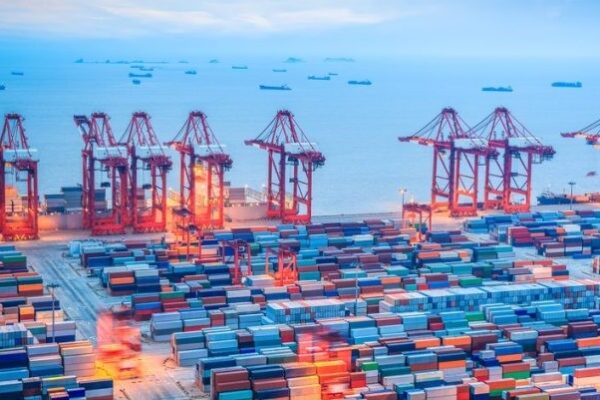A press release from the World Trade Organization (WTO) yesterday (12 April 2022) raised some red flags about issues putting the “fragile global trade recovery at risk.” They note that prospects for the global economy have darkened since the outbreak of war in Ukraine on 24 February, prompting WTO economists to reassess their projections for world trade over the next two years.
The organization now expects merchandise trade volume growth of 3.0% in 2022 – down from its previous forecast of 4.7% – and 3.4% in 2023, but these estimates are less certain than usual due to the fluid nature of the Ukraine conflict.
The most immediate economic impact of the crisis has been a sharp rise in commodity prices. Despite their small shares in world trade and output, Russia and Ukraine are key suppliers of essential goods including food, energy, and fertilizers, supplies of which are now threatened by the war. Grain shipments through Black Sea ports have already been halted, with potentially dire consequences for food security in poor countries.
The war is not the only factor weighing on world trade at the moment. Lockdowns in China to prevent the spread of COVID-19 are again disrupting seaborne trade at a time when supply chain pressures had appeared to be easing. This could lead to renewed shortages of manufacturing inputs and higher inflation.
As we have been reporting over recent weeks, the Shanghai lockdown is delaying shipping schedules around South China. As the port enters the second week of an indefinite lockdown, containership operators are increasingly omitting calls at terminals and preparing to announce more ‘blank sailings.’ Reduced trucking capacity and the closure of factories and warehouses has prompted ocean freight to be diverted – Ningbo, Qingdao and Tianjin topping the list of alternative ports.
And now Guangzhou has become the latest port city to undergo mass Covid-testing, a frequent precursor to tough restrictions under China’s zero-Covid policy. Depending on how long the lockdown lasts, shipping lines may need to look at idling vessels for a while.
The lockdown in Shanghai is having an impact on South China shipping schedules by delaying vessel arrivals at Hong Kong and Yantian, for example. Shenzhen and Hong Kong have been battling their own on-and-off Covid testing and restrictions for months, disrupting normal manufacturing and trade levels.
The lockdown in Shenzhen last month resulted in a 32% reduction in ocean shipment volume in Guangdong Province (where Shenzhen is located). Guangdong’s seven-day average ocean volume is now down only 15% when compared to before the lockdowns went into effect. In Shanghai container ports are experiencing reduced volumes, with the seven-day average throughput now significantly down compared to a month ago.
The full impact of China’s ‘dynamic zero-Covid’ strategy may not be felt by consumers here for a month or longer. As for the war in Ukraine, no end seems to be in sight.
For more information about international trade and shipping, contact us here at Colless Young. As licensed Customs Brokers and International Freight Forwarders, we handle all your transport needs. We are based in Brisbane and offer a complete range of logistics services, for both airfreight and sea cargo, import and export – including fumigation, warehousing and trucking – through all Australian ports and airports.

